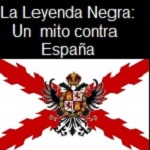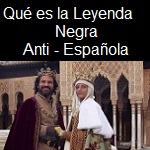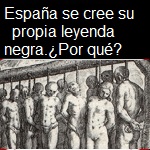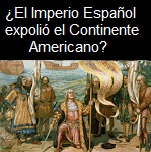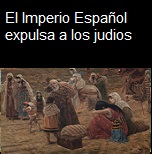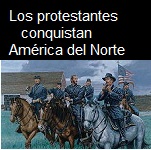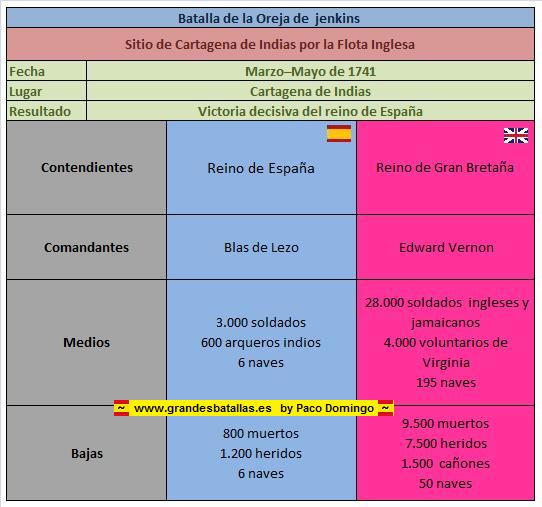THE BATTLE OF CARTAGENA DE INDIAS (WAR OF JENKINS' EAR)
In memory of Don BLAS DE LEZO "HALF MAN"
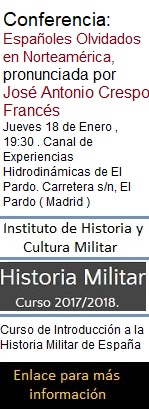
Batallas de la web
Inicio
Alhucemas
Bailén
Baler (El sitio de)
Caney (El)
Cartagena de Indias
The Battle of
 Cartagena de Indias
Cartagena de Indias
Covadonga
Diada de Cataluña
Empel (Milagro de)
Granada
Guadalete
Isla Tercera, Azores
Krasny Bor
Las Navas de Tolosa
Lepanto
Levantamiento Cantonal
Mühlberg
Numancia
Otumba
Pavia
Pensacola
Reconquista: cronologia de batallas y hechos relevantes "Nueva"
Saigón
San Quintín
Simancas
Tenerife 1797: la gran derrota de Nelson
Viena (el sitio)
Guerra Civil
Española
Revolución de Asturias (I) El PSOE Rompe con la República "Nueva"
Causas de la Guerra Civil
Prólogo Guerra Civil
Inicio Guerra Civil
18 de julio de 1936
Recursos iniciales de cada bando
Se inician los combates
5 de Agosto: Convoy de la Victoria
Alcázar de Toledo
Brunete
Ebro
Jarama
Santa María de la Cabeza
Teruel
Final de la Guerra Civil
Por qué la República
perdió la guerra
"Nueva"
Grandes Héroes
Olvidados
Gran Capitán
Melchor Rodriguez,
el Ángel Rojo
Otras Cosas
Almogávares
Laureada de San Fernando
Conciertos y Desfiles Militares
Cronología de las Batallas
El Mito del Federalismo
Herencia Española en USA
Historia de Catalunya para Separatistas
Páginas Amigas
El Imperio Español a través de los videos
"Nueva"
FONOTECA
Españoles Olvidados por D. José Antonio
Crespo-Francés

Rutas con Historia
Frente del Agua (GCE)
Magnicidios en la Historia de España
Asesinato de Prim
Certificados
de Calidad





Visitarla
Estadísticas












Buscador interno de www.grandesbatallas.es

Small tribute to Don Blas de Lezo, the Hero of Cartagena de Indias.
I'll start this web page with a small tribute to the architect of the Spanish Victory in The Battle of Cartagena de Indias, one of the great heroes of Spanish History, Don Blas de Lezo y Olabarrieta
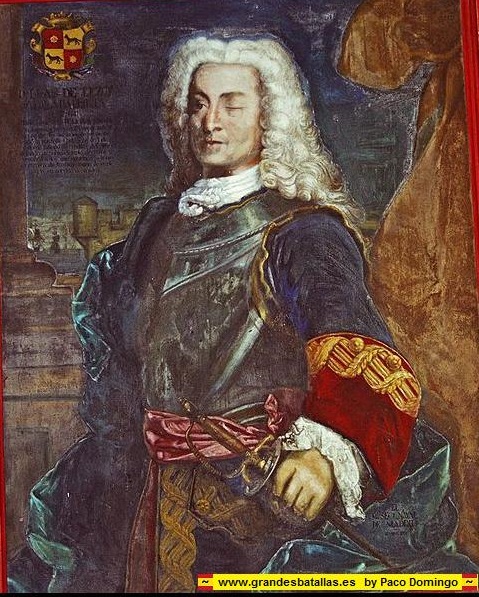 Sharing on the Facebook
Sharing on the Facebook
Should we want to remember heroic moments of The Spanish Navy, we must remember a great admiral, Don Blas de Lezo. He was born in Pasajes, Guipúzcoa on February the 3rd, 1689. Blas de Lezo went into immortality after his epic life. He saw action in 22 battles and expeditions. He surrendered to Spain tens of enemy ships. No enemy prevailed over him; nobody could ever boasted to have either defeated or humiliated him; he knelt only to his King. Lezo was one, if not the best Admiral of his time and became one of the best admirals in the History of the Spanish Navy. He was a feared by man in all seas. The Basques have always been great Spanish sailors who gave shining moments to Spanish History..
Blas de Lezo started his career in the French Navy; he enlisted at 12 year old as midshipman to the service of the Count of Toulouse, Louis Alexander de Bourbon son of Louis XIV. This was possible since Spain was torn up by the Succession War. A civil war that broke away after the childless death of Charles II, opposing those who defended the inheritance rights of the Archduke Charles of Austria to those defending the rights of Louis XIV grandson Philip of Anjou. The first backed by Great Britain and The Netherlands, the later by France. For the occasion Louis XIV of France has ordered the fullest possible exchange of officers between the French and Spanish armies and fleets.
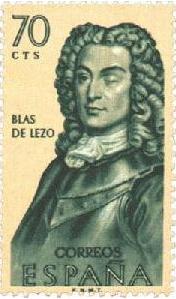
In 1704 the 15 year old Blas de Lezo had transferred to the Spanish Navy. He was to receive his fire baptism at the Velez-Malaga naval battle fought between the Anglo-Ducht and Hispano-French combined fleets. After a cannon shot had badly wounded Lezo’s left leg; , the ship’s surgeon decided to perform a below knee amputation, he used no anesthesia but not a single complain from the youngster was ever heard. Young Lezo’s courage and fighting spirit, caught the attention of his officers. He earned his first recognition, and got promoted to the rank of Ship Ensign (lieutenant).
Later in the war he was posted to Toulon. He lost his left eye while defending Santa Catalina Castle during the Siege of Toulon; shrapnel from a cannon shot bursted it.
In 1713 he lost the use of his right arm during the second siege of Barcelona. A musket bullet took the mobility of his forearm.
At 25 Blas de Lezo’s physical appearance was pitiful. He had lost his left eye, one leg and the use of one arm. Nevertheless, he was still active, still fighting as an officer in the Spanish Navy. Blas de Lezo had to bear several nicknames, Peg Leg, half man, etc. He disliked being called the Peg Leg Admiral.
In 2005 The British Government celebrated the 200th anniversary of his victory at Trafalgar against the Franco-Spanish fleet. Navies worldwide were invited to the Naval Parade, Spain sent an aircraft carrier and his escort frigate (F 103). Just as by chance, the name of this frigate was "Blas de Lezo". It was in memory and homage to Don Blas de Lezo, the gallant guipuzcoan who gave the Royal Navy one of her major defeats; it was at Cartagena de Indias. British historians have tried to keep this major defeat hidden, but reality was F 103 Blas de Lezo sitting at anchor on the Thames; maybe they should soothe their pride.
The Battle of Cartagena de Indias. Summary
The Battle of Cartagena de Indias was fought from the 13th March to 20th May 1741, between Spanish and British Navies, This battle was decisive for the final outcome of The War of Jenkins' Ear (1739-1748) fought between Spain and Great Britain.
Fort the occasion Britain assembled an Invincible Armada of 195 ships, not surpassed until the Gallipolli landings at the beginning of the XX century. She dwarfed the Spanish Armada Invencible some 200 years older, in fact the British fleet exceeded in more than 60 ships Philip’s II Great Armada (some 50% more).
The Royal Navy, commanded by Admiral Edward Vernon, tried to invade Cartagena de Indias with 32,000 soldiers and 3,000 artillery pieces. Cartagena was defended by 3,600 soldiers and 6 Spanish ships. Great Britain was so sure of Her victory that the British King ordered to mint coins celebrating this triumph. On the coins they wrote, "Spanish arrogance humbled by Admiral Vernon and the British Heroes who took Cartagena, April 1, 1741" .They represented a whole-body Blas de Lezo, handling his sword to Admiral Vernon, YES, with both arms, all his legs, arms and possibly eyes ... amazing isn't it?
Victory went to the Spanish Army, commanded by Cartagena de Indias’ Comander General Blas de Lezo. This victory prolonged the Spanish military supremacy in the western Atlantic until the nineteenth century.
The Battle of Cartagena de Indias Synoptic Card
The Battle of Cartagena de Indias; Historical Background
It was a very difficult time for Spain. In the eighteenth century Spain was involved in many wars. In 1713 Spain had to sign the Treaty of Utrecht, by which. She lost all her Continental European possessions. But Spain still kept most of the American Continent. The great and flourishing Hispano American cities had become critical bastions to ensure trade between the Spanish Empire and the Metropolis.
Cartagena de Indias Map
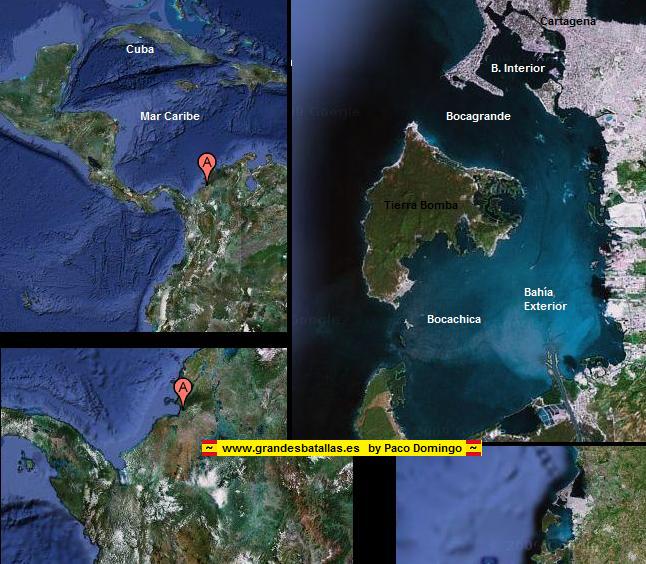
Cartagena de Indias was the main harbour in the Americas. A beautiful and strongly fortified city, where the Spanish were going to show the world some of their gallantry, courage and heroism. The 1739-1748 war between Great Britain and Spain went down in History as the War of Jenkins' Ear. A strange conflict that was buried by both contemporary chroniclers and later historians.
Bay of Cartagena de Indias
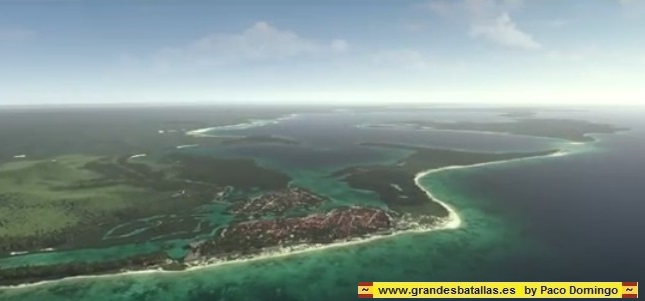
Where the odd name of Jenkins’ Ear War comes from?
In the XVIII century Spanish overseas traffic was constantly hampered and interrupted by English pirates. Around the coasts of Florida there was a very active pirate, Robert Jenkins by name. He was caught by a Spanish warship, commanded by Captain Juan de León Fandiño. The Spanish captain spared the pirate’s life but, as punishment, he amputated him an ear; with the Pirate's ear in his hand, he said:
"Go tell your King that I’ll do Him the same thing should he dare the same thing”
Robert Jenkins
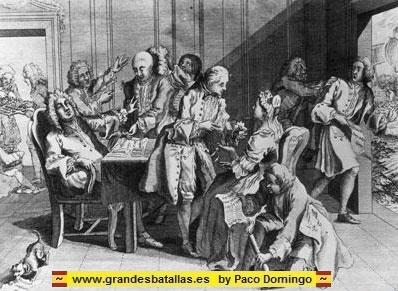
As part of a campaign of parliamentary opposition to Prime Minister Walpole, Jenkins appeared in the House of Commons in 1738. In his appearance, Jenkins reported the case with his ear on his hand. The house found both the cutting of the ear and the admonition to the King an insult. Therefore, as a result of this political maneuver, Walpole was forced to declare war on Spain on 23 October 1739.
Great Britain rallies Her fleet
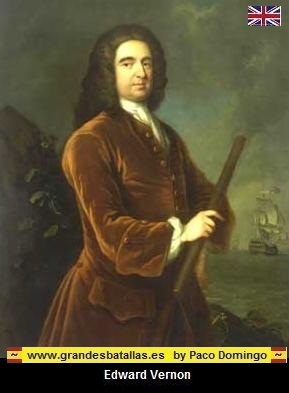
This affront to the British King and Parliament was the British Official Reason for the war, but it was not the truth, just another excuse for a “Rightful War”. Reality was that Great Britain was attempting to take over the trading position of Spain. Great Britain would have liked to have the maritime and commercial control of the Atlantic Ocean and snatch the, now prosperous, American possessions of the Spanish Empire
Great Britain organized a formidable Armada. She prepared and assembled a great fleet of 195 ships between warships and transports, the largest fleet ever until the Allied Fleet of the Dardanelles Intervention in IWW. The fleet set sail for Cartagena de Indias; to take the city by assault was the British objective.
Between British troops was George Washington’s half-brother, leading a group of 4,000 American militiamen who were to participate in the taking of the city
Along within 195 ships traveled 11,000 assault troops, 15,000 sailors, 4,000 Americans Minutemen and 2,000 slave black Jamaican cane cutters. These Macheteros would be the vanguard, Great Britain’s cannon fodder in Her attempt to conquer Cartagena de Indias. Then Great Britain would attack with the best resources. Great Britain was determined to win and take from Spain her American Empire.
Blas de Lezo organizes the City Defense
In those days, Blas de Lezo as Comandante General was responsible for the defense of . Cartagena de Indias. The City had huge forts and castles that protected the civil city, the harbour and the bay. But the Spanish defending forces were very few; 3,000 Spanish Regular Army soldiers, reinforced by 600 Inland Indian archers and 1,000 artillery pieces, together with 6 vessels. These were all the available forces to ensure that Cartagena de Indias will remain Spainsh.
Spanish intelligence services were decisive for the final outcome of the battle. Spain managed to infiltrate spies in His Majesty’s Court at Westminster and in Admiral Vernon’s headquarters. So Vernon’s plans were known in advance by The Spanish Cortes at Madrid and Comandante General Blas de Lezo . Information forwarded to America led Blas de Lezo to think that he will would have sufficient time to react and anticipate events.
The Spanish fleet was anchored in Havana awaiting the arrival of the British Fleet. So Vicerroy Eslava, political and Military Commander of the viceroyalty was confident that Admiral Torres would arrive in time off Cartagena to attack Vernon from the sea; but Torres never arrived to Cartagena.
Cartagena was not going to surrender; Blas de Lezo chose a stubborn resistance of the city and so organized the available resources for this purpose.
Blas de Lezo was conscious of the very few resources he had. Nevertheless, he was determined to withstand and resist with all he had. Six ships were scuttled by the Spanish to prevent easy movement of British warships at the harbor entrance. Before sinking the ships, Blas de Lezo ordered to dismantle the all guns in the six ships and strategically placed them in key positions around the city.
San Felipe de Barajas Castle
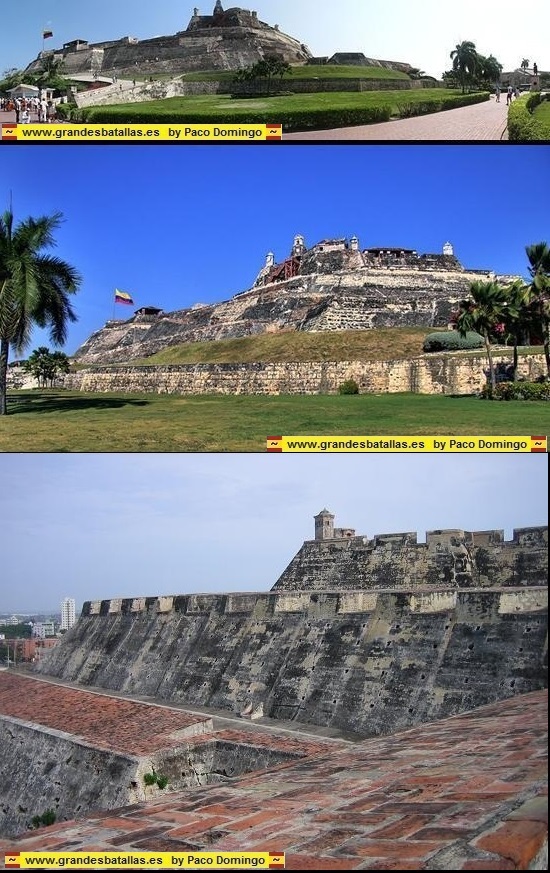
San Fernando de Bocachica Castle
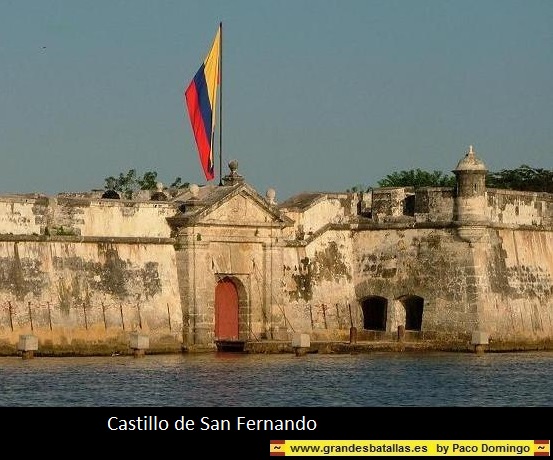
Cannon shots
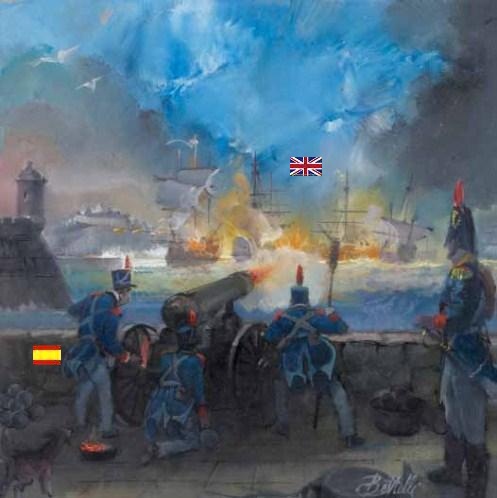
The Battle of Cartagena de Indias Battle Array
BRITISH FLEET
British commanders in the Battle of Cartagena de Indias

British Ships in Vernon´s Fleet
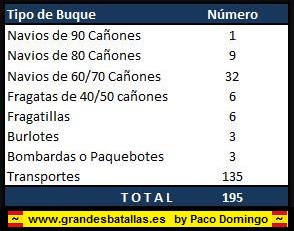
Ship Commandersm of Vernon´s Fleet
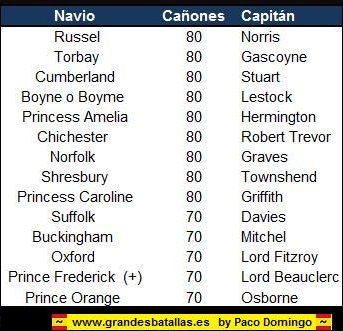
British Troops , Battle of Cartagena de Indias
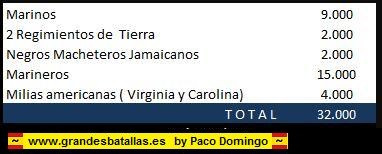
SPANISH RESOURCES
Spanish Castles
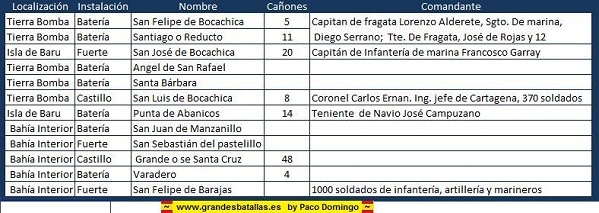
Spanish Vessels at Cartagena de Indias

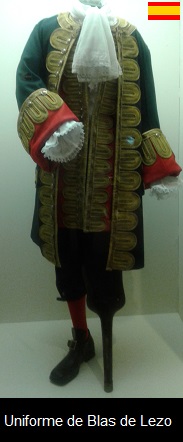
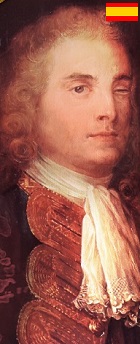
Blas de Lezo´s Army Soldiersin Cartagena de Indias
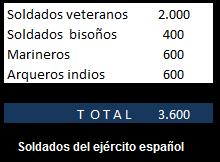
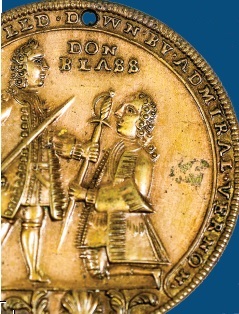
The Battle of Cartagena de Indias begins
Landings Picture
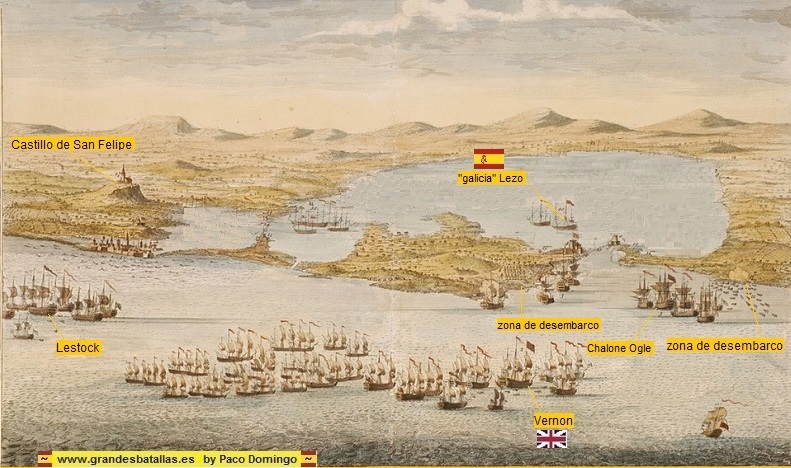
The bay of Cartagena is very large. It is divided into two natural bays with very different defensive problems: The Exterior Bay bounded by Bocagrande Peninsula, the Continent and the islands of Tierrabomba, Baru and Manzanillo; and the Inner Bay with the colonial port, also closed by Bocagrande peninsula, The Continent and the islands of Manzanillo and Manga.
On the 17th March 1640, the Rodrigo Lobo da Silva’s Flagship and the galleons, Buensuceso and Concepcion sank off the Bocagrande Peninsula. These wrecks made a sand collecting nucleus that eventually formed a sand bank at the harbour entrance making navigation difficult in 1741.
At the same time tides naturally deepened the Bocachica channel. With a slight dredging of its muddy bottom, the channel was made available to the heaviest galleons and warships for sailing into Cartagena de Indias harbour, so they could sail pass between Baru and Tierrabomba islands. Radically changing the whole defense system of the Bay of Cartagena. In 1741, the Bocachica channel would be right for the British three decks Men O’War to sail in Cartagena’s Harbour.
Model
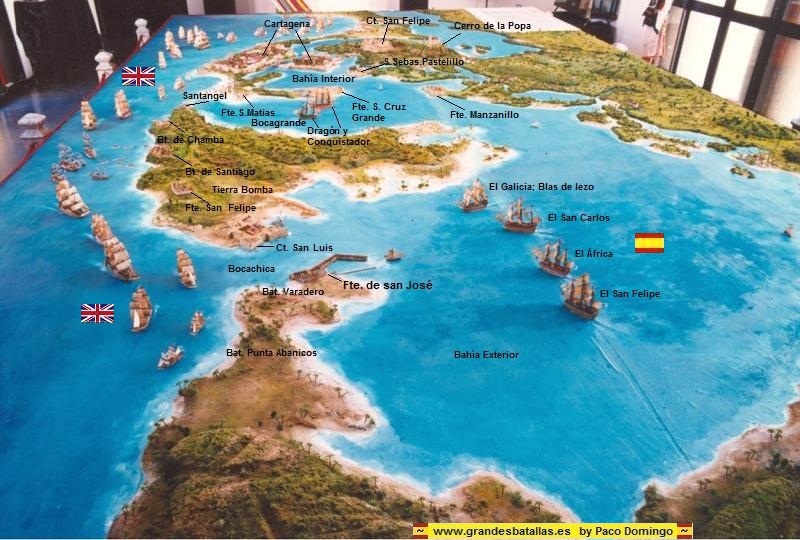
On the 13th of March, 1741 Admiral Edward Vernon’s Invincible Armada arrived off the Bay of Cartagena de Indias. Vernon ordered to place the vessels against Cartagena de Indias defenses.
15 March, the first British ships come to anchor at Playa Grande and two days later all 195 ships, belonging to the Royal Navy Third Squadron set anchor there. Commanders were Admiral Vernon, Rear Admiral Chaloner-Ogle and captain Lestock.
19 March, the British were still off Cartagena without a shot having been yet fired just looking at the operations field. Some landing attempts were intercepted by Spanish troops
20 March, the whole British fleet set anchor off Punta de Hicacos, near the port of Cartagena; Spanish vessels Conquistador and Dragon blocked the way to the inner bay of Cartagena via Bocagrande Channel.
Battle of Bocachica
15 March, the first British ships come to anchor at Playa Grande and two days later all 195 ships, belonging to the Royal Navy Third Squadron set anchor there. Commanders were Admiral Vernon, Rear Admiral Chaloner-Ogle and captain Lestock..
British Attack Against Cartagena de Indias
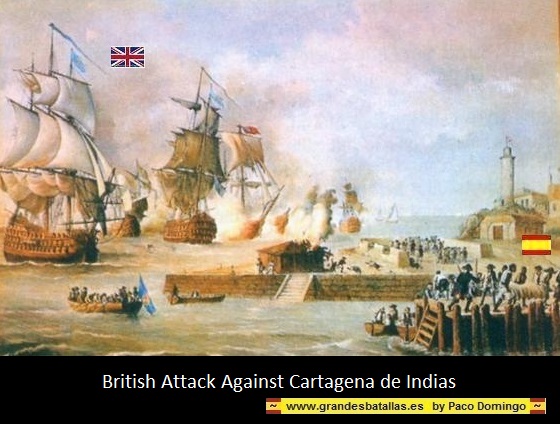
Since Bocagrande Channel passage was impossible, Lestock tried to lead 12 ships through Bocachica Channel. During the crossing they opened fire against the 11 gun Santiago battery. This battery together with with the 5 guns San Felipe de Bocachica Battery formed a defensive line under the command of Capitan de Fragata Lorenzo Alderete. They The Brisith had failed in their attempt to break the Spanish line and storm into Bocachica so they kept firing against San Felipe de Bocachica Castle
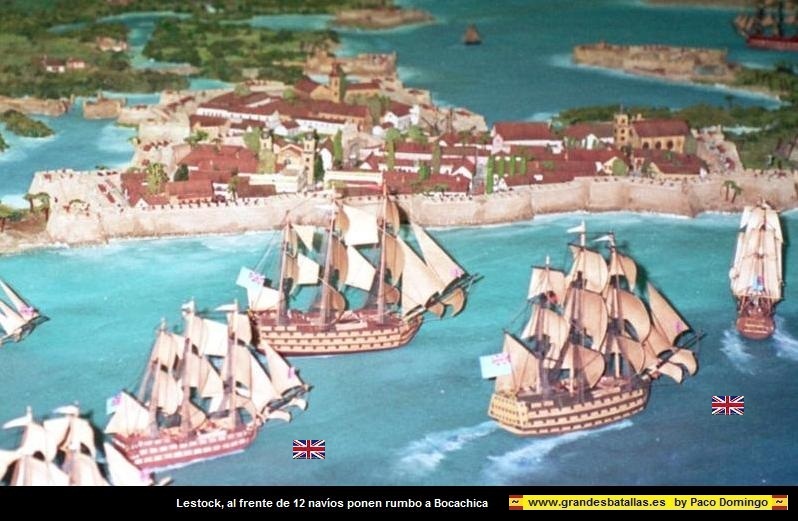
20th March, 500 soldiers landed near Santiago Battery. The main British Corps landing the 21st.
During the nights of 20 to 21, the British took Varadero Battery and reversed its guns to fire against Punta Abanicos Battery. The Spanish evacuated this battery, but Campuzano with a sergeant, 11 soldiers of the Regiment of Aragon and two gunners stayed on, still manning the guns. The Spanish also answered British fire with cannon shots from the ships San Felipe and Africa; the ships Galicia and San Carlos fell back in reserve.
3rd April, 18 Royal Navy ships started a heavy bombardment on Bocachica. It was a terrible bombing to break up the castles of San Luis and San Jose defenses closing the access to the Outer Bay. Knowles attacked Abanicos Cove aiming to destroy Campuzano’s resistance, who eventually had to retreat his small troop to Fort San Jose.
4th April, Punta Abanicos Battery is completely destroy. Lestock attacks to neutralize Fort San José and San Luis Castles.
Bocachica
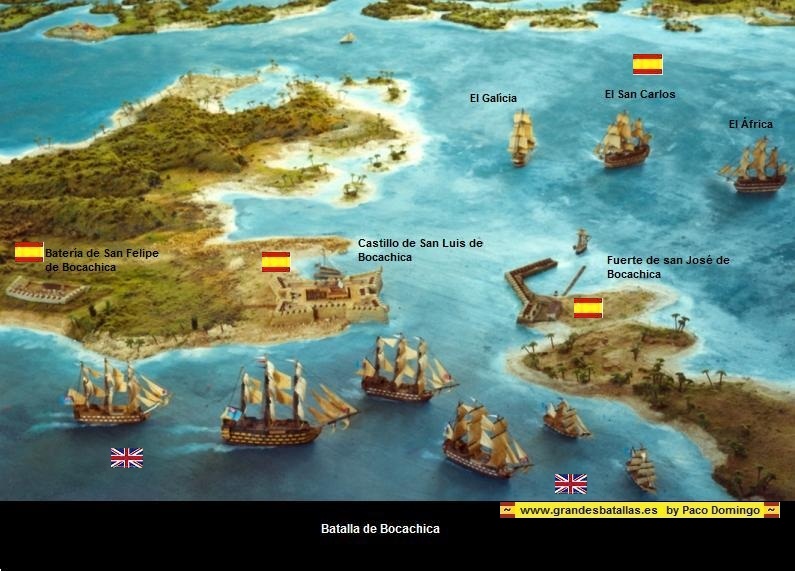
San Fernando de Bocachica Castle.
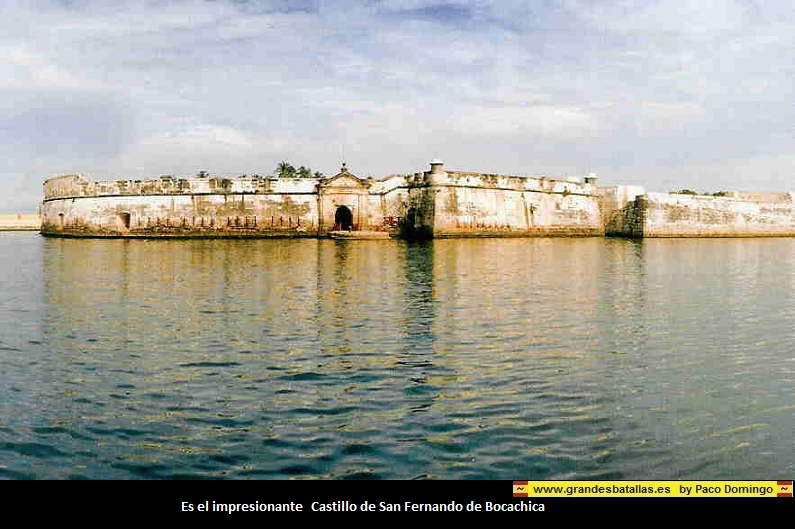
4 and 5 April, the fort and the castle received an intense and prolonged bombardment. The three batteries covering land and sea from San Luis castle were destroyed and so the beaches were open to British landings. The castle walls collapsed and British Infantry charged through the breach with fixed bayonets. Defenders were unable to hold any longer so they decided to retreat.
The Inner Bay Battle
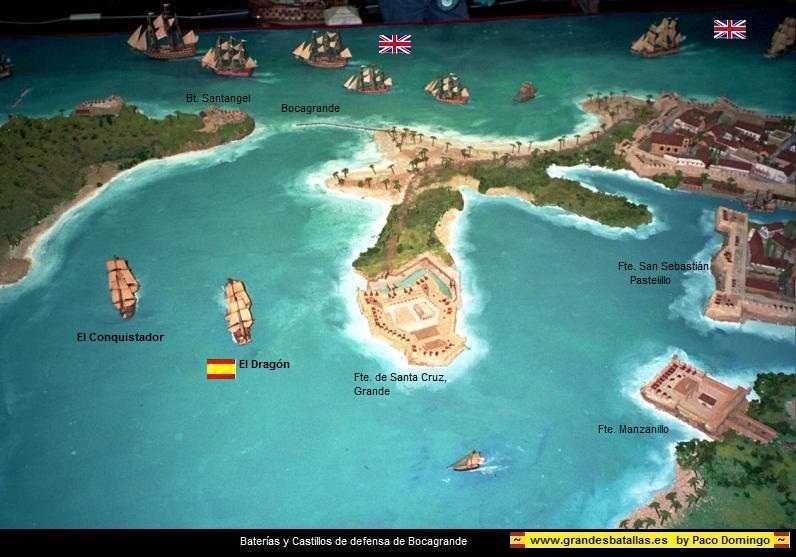
The night 5 to 6 April, Blas de Lezo sails the vessels Dragon and Conqueror to position between Castillo Grande and Manzanillo Channels in order to prevent the passage of British ships by the entrance of Bocagrande where they would be eventually sunk.
Timely scuttling of Spanish ships was an integral part of Cartagena de Indias defense plan. Their wrecks would hinder British Fleet maneuvering. The San Felipe was burned. To block the Bay entry the Africa was sunk by cannon fire from The San Carlos. Soldiers from the ship San Felipe, could not escape and were caught by the British.
Spanish position was becoming increasingly difficult. Fort St. José was evacuated, its garrison was ferried back by small boats first to Castillo Grande and then to Cartagena de Indias.
On the 11th of April the British took the abandoned Santa Cruz Castle.
On April the 13th, at 9 am, began the city siege with intensive, systematic bombing of civil targets. Simultaneously, another Fleet besieged San Juan de Manzanillo Battery. The situation was becoming desperate for the Spanish, they lacked food and the enemy gave no truce.
Endless days went on. British shelling on the civil city was relentless, intense and continuous morning, noon, night, morning ... but Spanish troops fighting spirit was at the same height that the city walls, he remained intact, untouched, without any weakening sign.
Cartagena de Indias City itself was severely punished by the British naval artillery. But military defenses were withstanding anything which might came on them from the British ships. Vernon thought that the Spanish would not resist more than two or three days , it was just impossible. The Spanish had orders to resist up to the end. They will not allowed themselves just one step back on the defense of Cartagena de Indias; they had nailed their Flag so they would either die there or succeed, surrender just was not an option.
Vernon decided to storm Cartagena the 16 April at 4 am. He will take Cartagena by assault with more than 10,000 men landed on the coast of Jefar: Jamaican cane cutters, the American militia and regular British Army troops.
But successive English offensives met with impregnable Spanish resistance in the trenches with muskets and bayonets.
On the 17th April British infantry, takes the height of Popa, just one kilometer away from San Felipe de Barajas Castle, the most important Spanish fortress in the Caribbean.
Blas de Lezo made three decisions that were crucial to the final outcome of the battle. He ordered deepening the moat around the castle: the scales height would be insufficient to reach the battlements. To avoid British cannon coming close to de castle walls, he ordered to dig a zigzag trench. He sent two "deserters" to misinform British troops. The wrong information led the British to a well-protected side of the wall, where they would be massacred without mercy.
Final assault against San Felipe de Barajas Castle
The final assault to the castle of San Felipe de Barajas was launched the night 19-20 April. It was launched after a powerful artillery bombing by a warship with 60 cannons and bombards. Vernon tried to storm the castle with about 10,200 infantrymen, organized into three columns, for whom the black “Macheteros” slaves opened the way. In front of Vernon’s forces was the Saint Lazaro Battery, a part of San Felipe Castle, and 1,000 highly motivated Spanish Infantrymen.
Castle of San Felipe
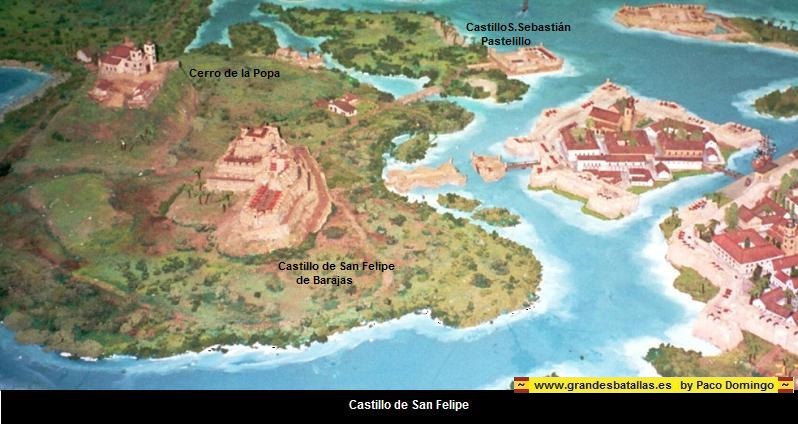
Surprise overwhelmed British Royal Marines when they realized that it would be impossible to climb the castle walls. British troops could neither attack, they were too low on the walls, nor to flee, dragged, as they were, by theirs equipment weight. Following Blas de Lezo’s plan Spanish troops opened a murderous fire against the British, the carnage was unprecedented.
Dawn just brought havoc to British troops. They met the bayonets of a 300 men squadron from the Spanish Old Tercios charging on them from their trenches. It was just slaughter. As the chronicle goes they just run for their ships.
The error of the Castle of San Felipe demoralized British Forces. The proud and cocky Sir Edward Vernon had been unable to overcome a few ragged Spanish led by an old peg leg, one-eyed, one-armed lame.
Panic gripped the British. The 9.000 strong Royal Marines force broke their lines and run full of panic before the last Spanish charge. They fled to the security of their boats to protect themselves from the fury of 300 strong, tired, Spanish Old Tercios Infantrymen.
From the 22nd through to the 25th April intensity of fighting decreased. But on the 26th April British Royal Navy bombed the city again.
On the 9th of May, Vernon realized that it was just impossible for his troops to take the Castle of San Felipe or the City of Cartagena de Indias by assault. The accurate, calm murderous shooting of the Spanish troops made it unfeasible for the British Forces. Vernon ordered withdrawal, lifting the siege and returning to Jamaica. He had failed miserably. He was just able to mutter a phrase: "God damn you, Lezo!".
After the defeat, Vernon sent a last letter to Lezo which read:
"We have decided to retreat, but we will return to Cartagena after we take reinforcements in Jamaica",
to which Blas de Lezo responded,
"In order to come to Cartagena, the English King must build a better and larger fleet, because yours now is only suitable to transport coal from Ireland to London"
British casualties were so high that Vernon had to abandon and sank many Men O’War. They had not enough sailors to man them.
Until the 20th of May there were British vessels leaving Cartagena de Indias. The last to leave the bay was Lestock. From the original 195 vessels, only 186 were counted leaving.
The fighting had lasted 68 days, ended with the British Royal Navy withdrawing in defeat, after losing 9,500 dead, 7,500 wounded, 1.500 guns and 50 ships either sank or badly damaged by enemy fire or disabled or just abandoned for lack of crews. There were nineteen ships of the line damaged, four frigates and twenty-seven transports lost. Of the 3,600 American Minuteman, who had volunteered lured by promises of land and pillage of mountains of gold, only 300 returned; most died of yellow fever, dysentery, and outright starvation. Lawrence Washington, George’s brother, was a privileged one who returned back home to renamed his Virginia plantation Mount Vernon, after Admiral Vernon.
The Spanish casualties were: 800 dead, 1,200 wounded, 6 ships lost. The forts and castles of Bocachica, Castillo Grande Castle and Manzanillo battery were completely destroyed.
This was horrific for the English, they were completely humiliated. The largest operation of the Royal Navy so far resulted in the greatest defeat of her history.
The false British Victory at Cartagena de Indias
Information telling of Vernon’s victory had arrived to England, sparkling euphoria at home. At the beginning of operations, Vernon had sent a mail to the King stating that he had achieved victory, but unfortunately for him the outcome was reversed. Actually it was the greatest and most humiliating defeat in the history of the Royal Navy. More so since it was inflicted by just a bunch of Spanish defenders led by the Spanish Admiral Blas de Lezo. In view of the supposedly good news, received from Vernon, King George II ordered minting commemorative medals in memoriam of the "victory".
Commemorative British medal of the "victory" at Cartagena de Indias, Vernon is depicted holding a command stick, pointing his finger to the Spanish city with his ships on the rear plan. The medal says "Admiral Vernon winning the town of Carthagena".
Commemorative British medal of the “victory” at Cartagena de Indias showing Vernon looking down upon the Spanish Admiral Blas de Lezo. Although actually he only had one leg, Lezo is depicted with his two legs, so he could appear knelt down, handing his sword to Vernon with his right arm, whose use he had lost to musket bullet at 25 y.o. The medal says "The pride of Spain humbled by ad. Vernon".
A song prematurely celebrated the victory was also composed:
Vernon´s Glory ; or, The Spanish Defeat.
Being an account of the taking of Carthagena by Vice-Admiral Vernon...
"...and the town surrender
To Admiral Vernon, the scourge of Spain
There were official celebrations and holidays for the people just based on a huge lie. Finally the real news arrived, announcing a most humiliating defeat for Vernon in front of Blas de Lezo, and for the Royal Navy in front of just a bunch of spainards. Reality froze their smiles.
Commemorative Medals of a Historical British Lie
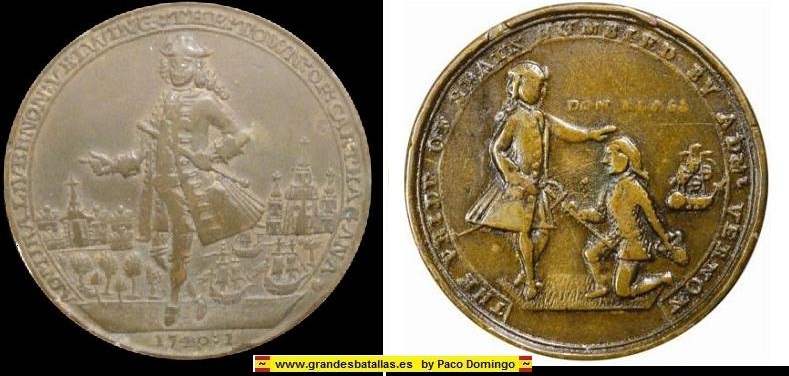
Casualties of the Battle of Cartagena de Indias
BRITISH ARMY CASUALTIES
British Casualties in Battle of Cartagena de Indias
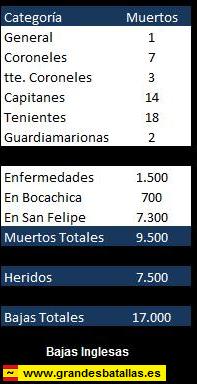
SPANISH ARMY CASUALTIES
Spanish Casualties in The Battle of Cartagena de Indias

Britain muted her defeat at Cartagena de Indias
The humiliation was such that King George II ordered the British historians not to write anything about the defeat. And historians did not write anything about Cartagena de Indias, this battle was unfairly hidden to History by Her Britannic Majesty Government.
One thing more: we can be sure that everybody in Spain has heard about Trafalgar, the Armada of 1588 etc. But who in England has heard about the huge English fleet that was crushed in Cartagena de Indias by a far much inferior force?. Very few Spanish have ever heard of the War of Jenkins' Ear, in which Britain suffered what may be described as the greatest shame of Her history.
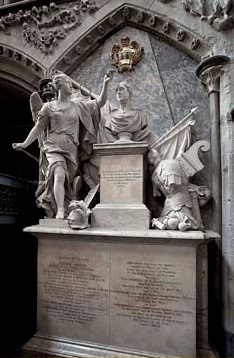
What happened to Vernon after his defeat in Cartagena de Indias
IImmediately upon returning to England, in view of the harsh reality, Vernon was relieved of his duties, he was written off the Naval Registry in 1746. Despite his deep disgrace, after his death in 1757 the King granted permission to bury his body in Westminster Abbey, like a hero.
The fallacious legend on his tomb reads:
“He subdued Chagre, and at Carthagena conquered as far as naval forces could carry victory”
The monument shows a figure with a floral wreath next to the bust of Admiral. Naval trophies, a Roman armor and Hercules’ Club.
For this military actions he received the thanks of both Houses of Parliament. . After this services he retired untitled for public service He received his reward, love and esteem from all his contemporaries and later generations
What happened to Blas de Lezo after his victory in Cartagena de Indias?
Blas de Lezo had a different fate. Don Blas was badly wounded in the fighting for Cartagena de Indias; he died five months later from combat injuries. Unfortunately, nobody knows where he is buried, his remains went to a common grave- His body would never be buried in the way he deserved. Don Blas de Lezo died in September 1741 in Cartagena de Indias
Not only without any recognition but also reviled by his King. 20 years after his dead, he received his first recognition with the award of a peerage in the person of his son, he was made Marques de Ovieco. The first monographs about don Blas de Lezo was published 70 years after his death. A plaque was placed in his native house in Pasajes de San Pedro and a sculpture in Cartagena de Indias, the later was donated by the Spanish government; a bust on a street in San Sebastian and his name was given to a Spanish Armada destroyer and then to a F100 Class Spanish Armada frigate.
Over time his memory faded away for later generations. Nevertheless, recently a great interest has aroused mainly thanks to the new Internet media.
Lately the people of Madrid has paid for and raised a monument in honor of Don Blas de Lezo . It was on inaugurated by King Juan Carlos I on Saturday the 15th of November, 2014 in presence of many followers of the figure of the Admiral who gave to the Royal Navy her greatest defeat in history.
.
The sculpture of Blas de Lezo at Colon Square in Madrid
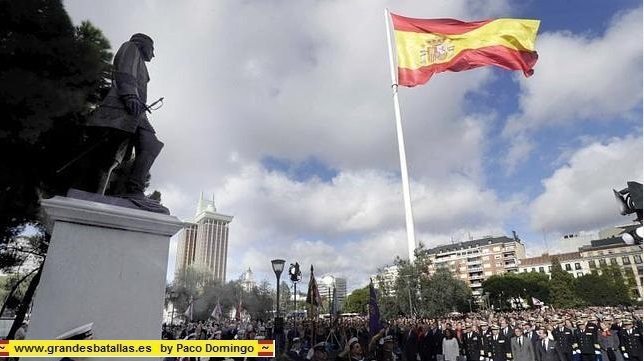
The sculpture of Blas de Lezo at San Felipe de Barajas Castle
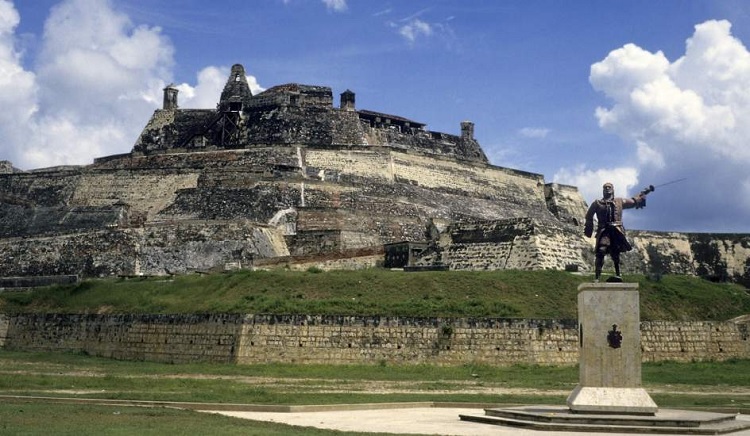
Plate of Don Blas
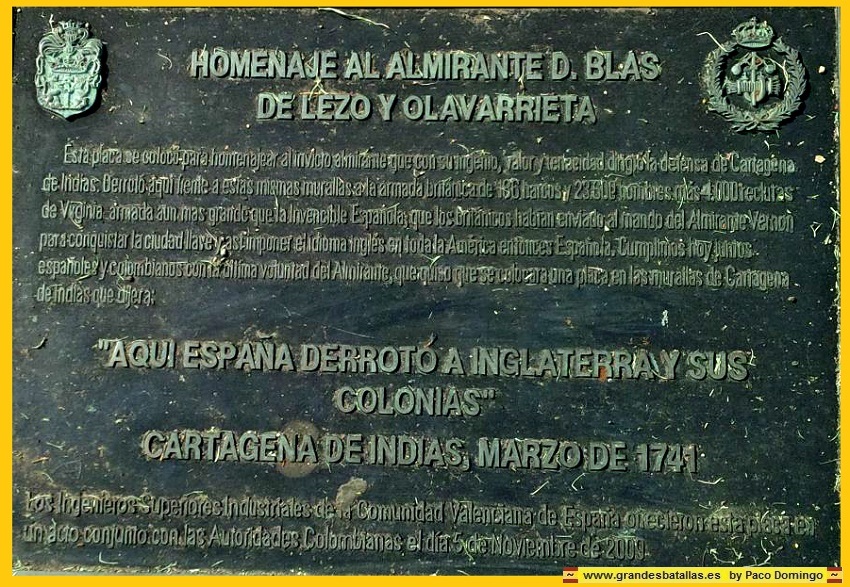
We could not pay Don Blas de Lezo the tribute he deserves, but at least he was posthumously awarded the title of the Marquis of Ovieco. Many Spanish ships were named Blas de lezo. Today the Armada Española frigate F103 is named after him.
Frigate F103 Blas de Lezo
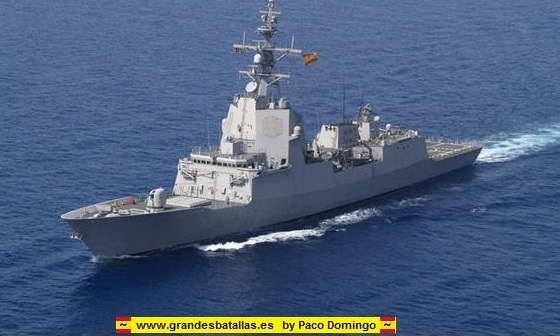
Should I have to identify the perfect military hero, Don Blas de Lezo would be my ideal candidate.
Consequences of the Battle of Cartagena de Indias
The victory secured American trade to Spain over 60 years. Britain never returned, neither appeared in front of Cartagena de Indias Bay. Spanish rule of the seas was so hegemonic that not only the Caribbean Sea but the Atlantic Ocean itself became a Spanish lake again. The Spanish could freely fly their flag on the Atlantic Ocean for 60 years..
This would not be the same after Trafalgar, when the British became the Lords of the Sea.
After the battle of Cartagena de Indias, Britain did not seriously threaten the Spanish Empire again. The Spanish Empire still survived for more than another century, until It died to the British lured treason of some of the Spanish Army Officiers. However years later, another important Spanish General, Bernardo de Galvez, carried out important military actions that decisively contributed to the collapse of the English colonies in America. This History has neither been disclosed to public knowledge. Do you wonder where Galvestone City name comes from?, but that's another story .....
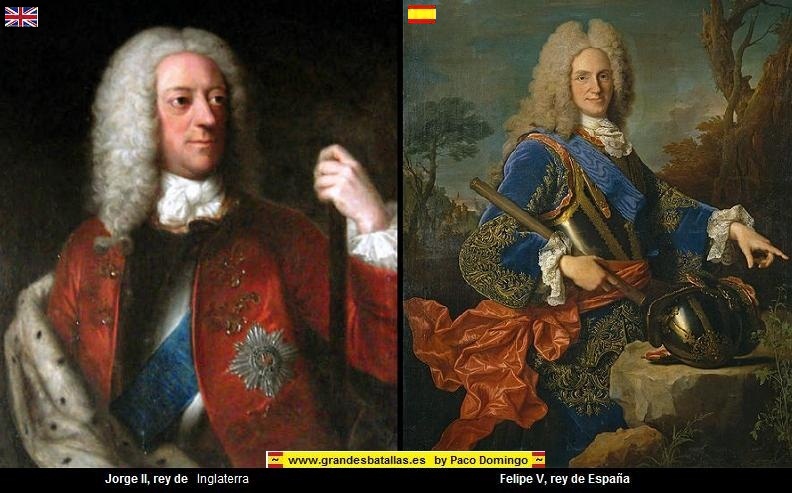 Sharing on the Facebook
Sharing on the Facebook
model of the Battle of Cartagena de Indias
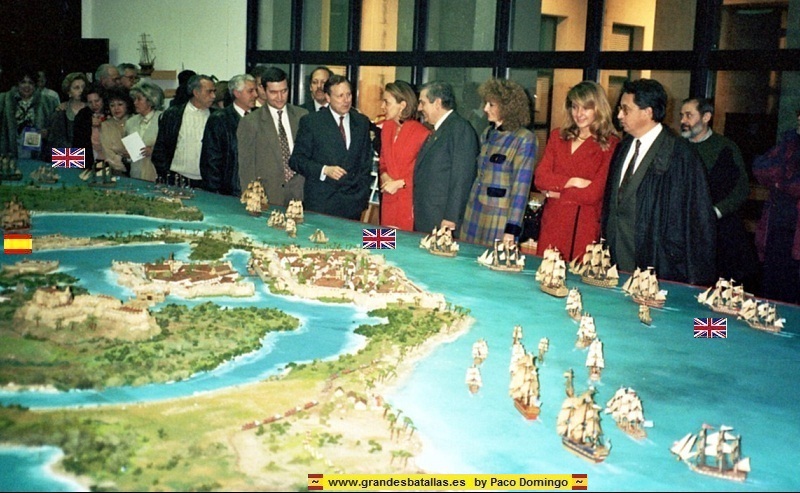
Enlace
The Castles defending Cartagena de Indias
Pictures obtained at the exhibition in honor of Blas de Lezo in the Naval Museum in Madrid, February 2013
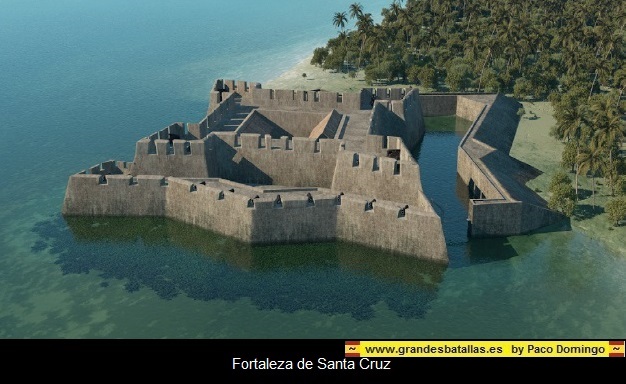
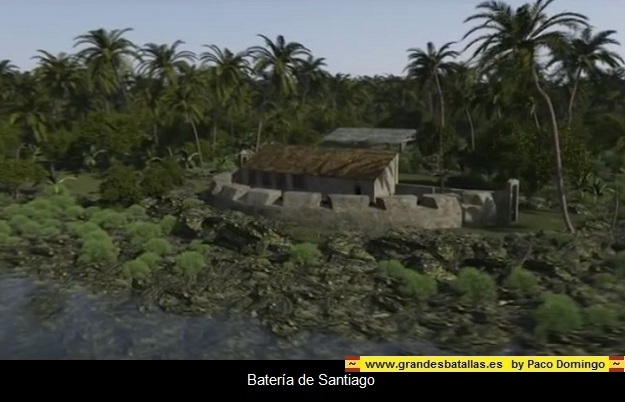
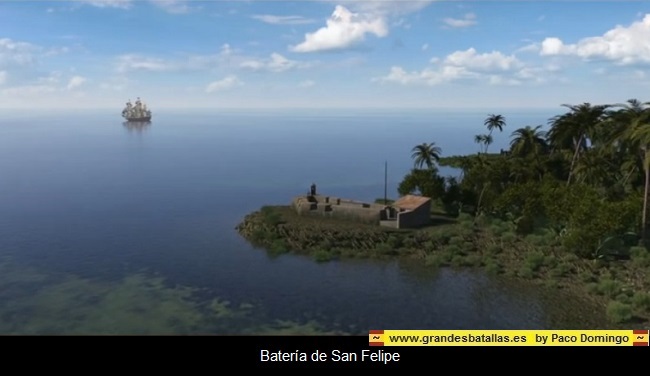
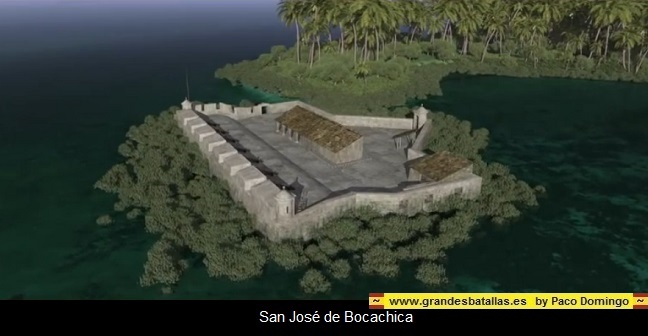
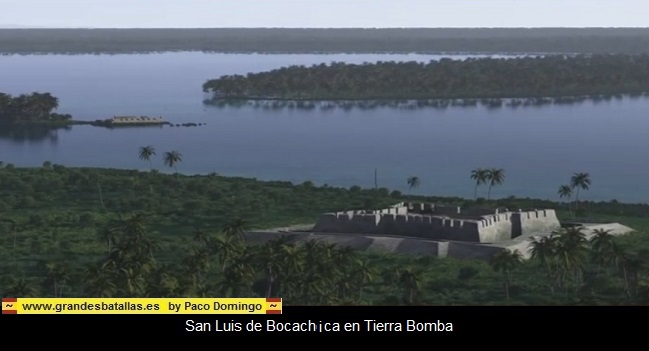
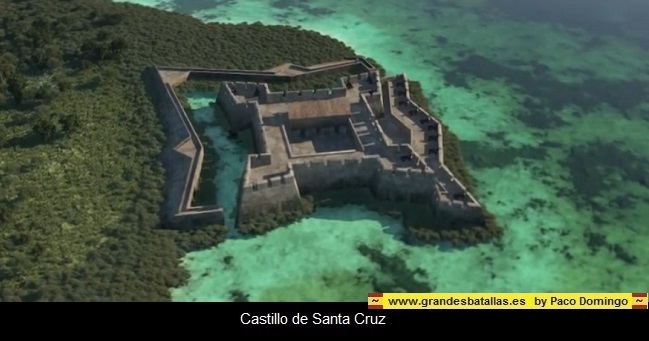
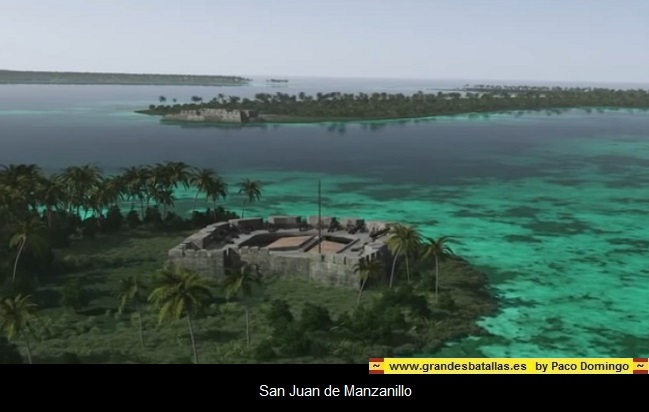
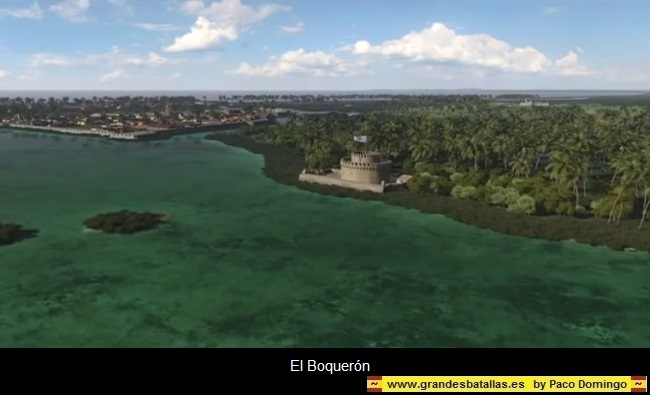
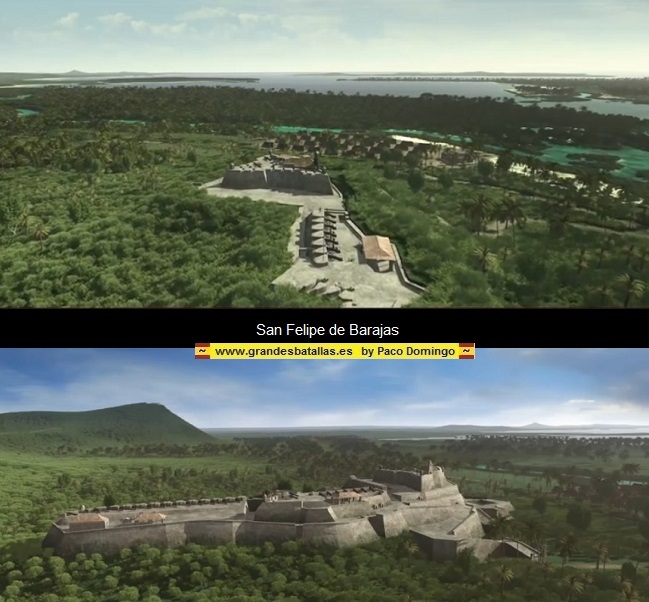
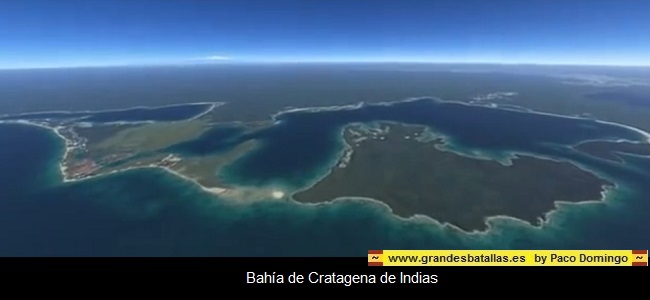
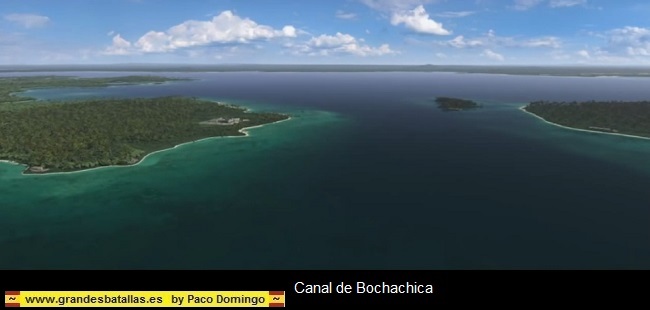
Acknowledgment
I would like to express my sincere appreciation to Andrés Elias Tovar Pardo for his excellent work on this english version about the Battle of Cartagena de Indias.
Andrew, thank you very much for your invaluable help.
Videos Related to Battle
Blas de Lezo and the invincible British navy in Cartagena
"1741 The Battle of Cartagena" Alestorm Scottish Group of Folk Metal .
Thank you very much
Paco Domingo
.

